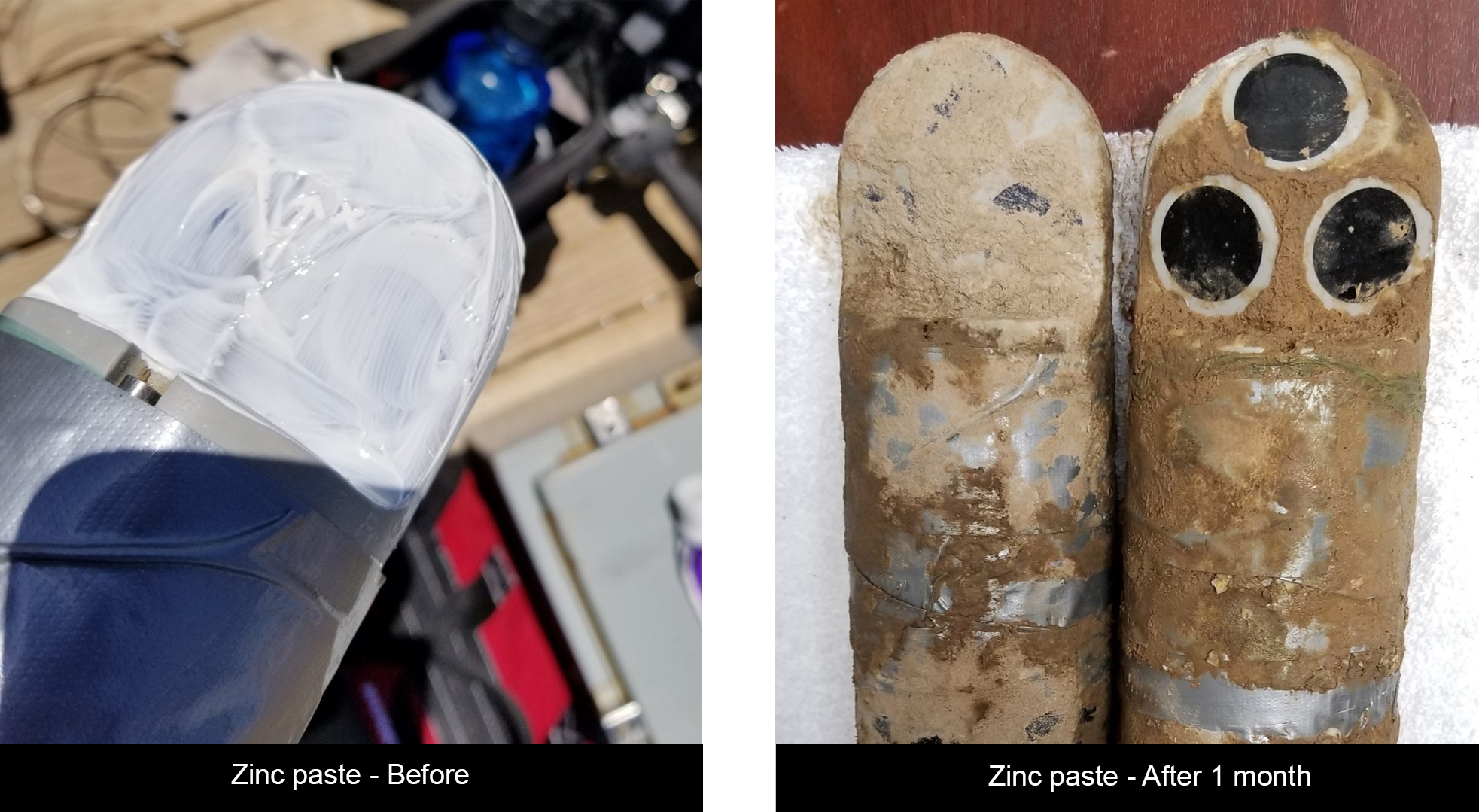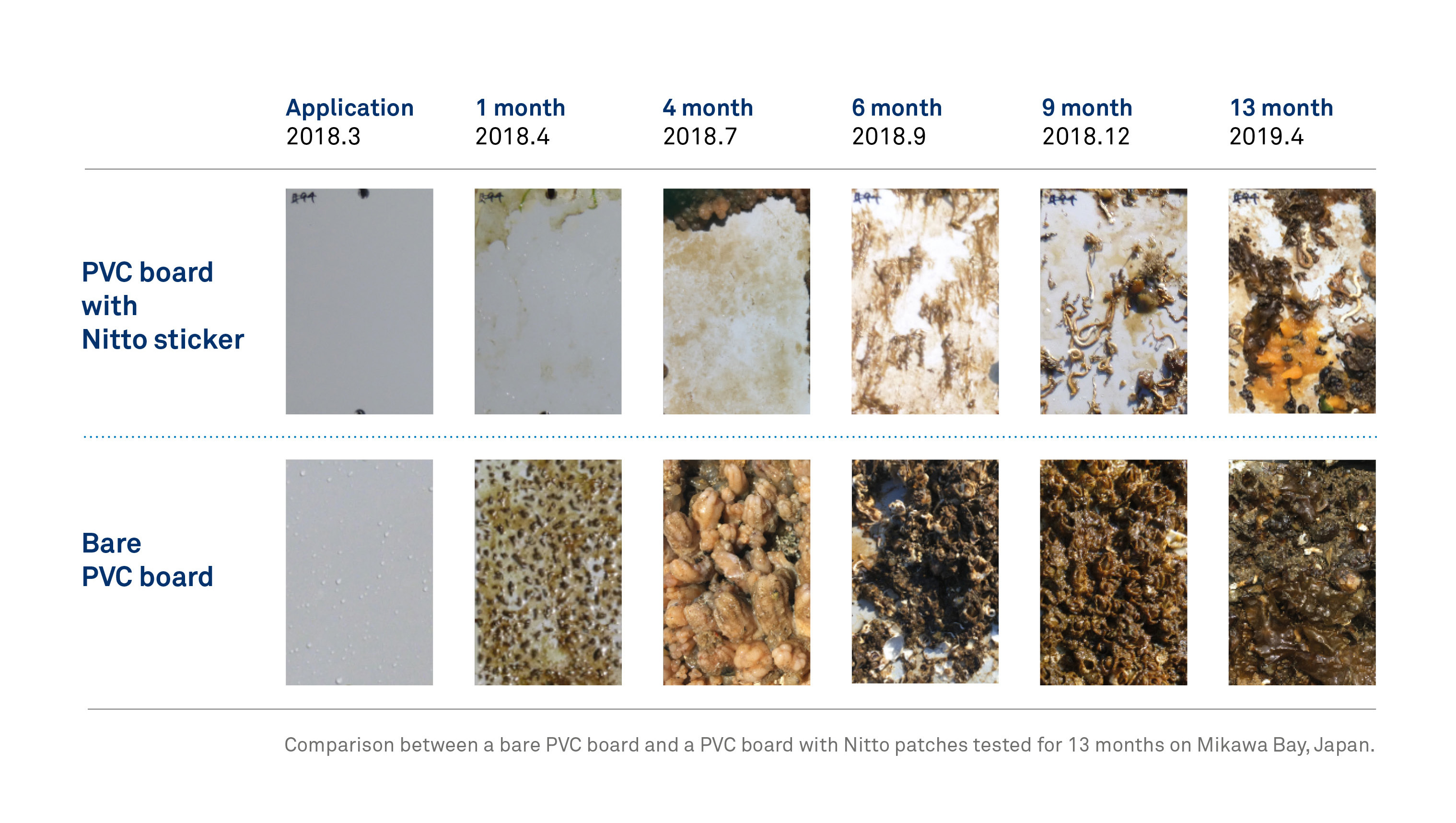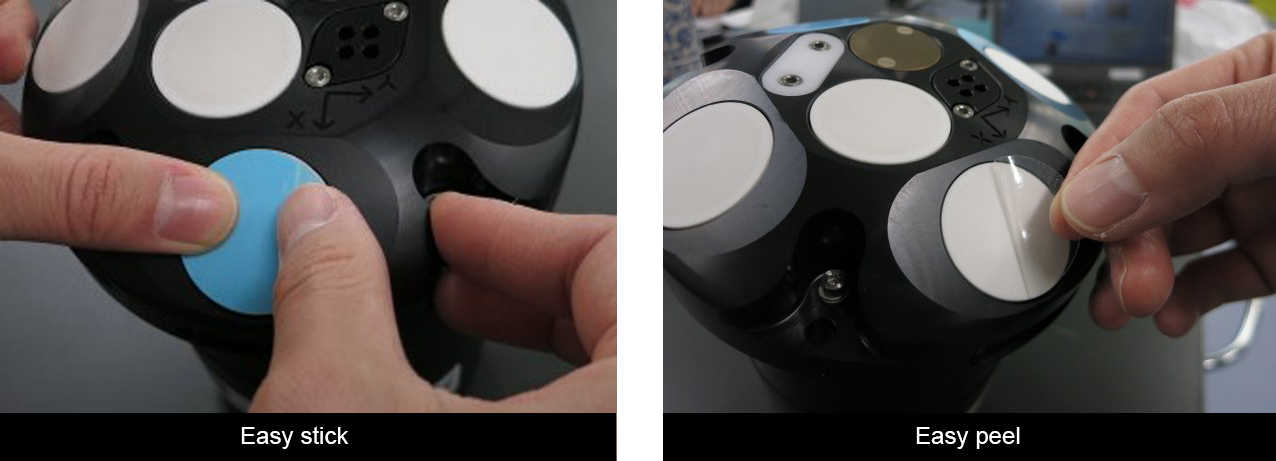
Why patches are the best anti-biofouling solution for an ADCP
- Company & product news
Biofouling is a curse for ADCP users. If a transducer gets covered in micro-organisms, its effectiveness is adversely affected. The received amplitude – which affects the signal-to-noise ratio – decreases and gradually gets worse. The range of the instruments may also be significantly reduced, even if current velocity measurement is less affected.
The challenges of preventing and removing biofouling from ADCPs
Periodic cleaning of your ADCP between deployments is, of course, highly recommended to ensure peak performance. But the organisms that cause biofouling are often firmly attached and difficult to clean off, even with a high-pressure jet of water.
You might be tempted to clean the transducer’s surface with more aggressive tools, such as scrapers or brushes. But this is not only a time-consuming and demanding job, it may also damage the surface permanently.
The obvious remedy is to prevent the build-up of biofouling in the first place.
One established method of doing this is to cover the transducer surface with a deterrent to marine life such as zinc oxide paste before subsea deployment. That could be a partial solution, if you can handle the guilt of using a harmful pollutant in the sea. A more environmentally friendly solution would be to replace the zinc paste with chili paste.
But both zinc oxide paste and chili paste last for just a few weeks underwater, so they are not good long-term solutions in any case (see Fig. 1).

Fig. 1: Nortek Aquadopp with zinc oxide paste. Underwater deployment, 1 month, US.
A better alternative is to use anti-biofouling patches, manufactured by Japanese firm Nitto. These provide a convenient, eco-friendly and long-lasting method of reducing biofouling and enhancing the performance of your ADCP.
How do anti-biofouling patches work?
The patches help prevent biofouling because the transparent film surface is specially treated to prevent micro-organisms from settling and taking root on it to start with. Instead, these organisms move on elsewhere, leaving the transducer clear (see Figs 2-4).
This effect is long-lasting, and it’s environmentally friendly, because nothing toxic or biocidal is released into the water. The patches are both efficient and eco-friendly.

Fig. 2: Patches are much less time-consuming and messy to apply and remove than paste.

Fig. 3: Comparison between a bare PVC board and a PVC board with Nitto patches, tested for 13 months in Mikawa Bay, Japan.

Fig. 4: Patches provide a safer and more effective way to prevent biofouling.
Easy application, long-lasting(*), better results
The Nitto patches are simple and clean to apply. They are self-adhesive and precisely cut to fit your ADCP transducer. All you need to do is to stick them on using your fingers.

Fig. 5: Patches are much less time-consuming and messy to apply and remove than paste.
Unlike traditional silicone/zinc oxide paint, the Nitto patches are ready-to-use once they are on – and there’s no bad smell, no mess, no dirty hands, no curing time and no paint left-overs.
Another benefit of the patches compared to antifouling paint is that they have a uniform thickness. A paste, in contrast, may be applied unevenly across the transducer, affecting the accuracy of results. Tests on the Nitto patches have shown they have no impact on current measurements and provide consistently high-quality results (see Fig. 6).

Fig. 6: Tests in the Seto Inland Sea, Japan, show current readings are unaffected by the patch.
The patch adhesive is also robust, allowing it to remain in place on long-term deployments and in strong currents. Nitto’s lab tests showed that the adhesive held tight to the substrate, even after more than a year underwater. The patch also stayed fixed when subjected to a sea current of 15 knots for more than 200 hours. That’s equivalent to about 7,000 km sailing. So, it works in both static and dynamic environments.
After use, there’s no tedious removal process, as happens with paste. These smart patches can be easily removed by hand and disposed of as inert plastic.
Nitto patches are the effective, simple and safe way to reduce biofouling on your transducer, and you can order them here.
Two insider tips:
・Replace the stickers every time the ADCP is taken out from the water: dust, dirt and atmospheric particles may, in fact, damage the antifouling surface of the stickers.
・After six months of underwater deployment, some biofouling may start to attach to the surface of the stickers. Although the stickers can be cleaned by wiping gently, the antifouling effect may have been somewhat reduced, so we strongly recommend replacing them with a new set.


